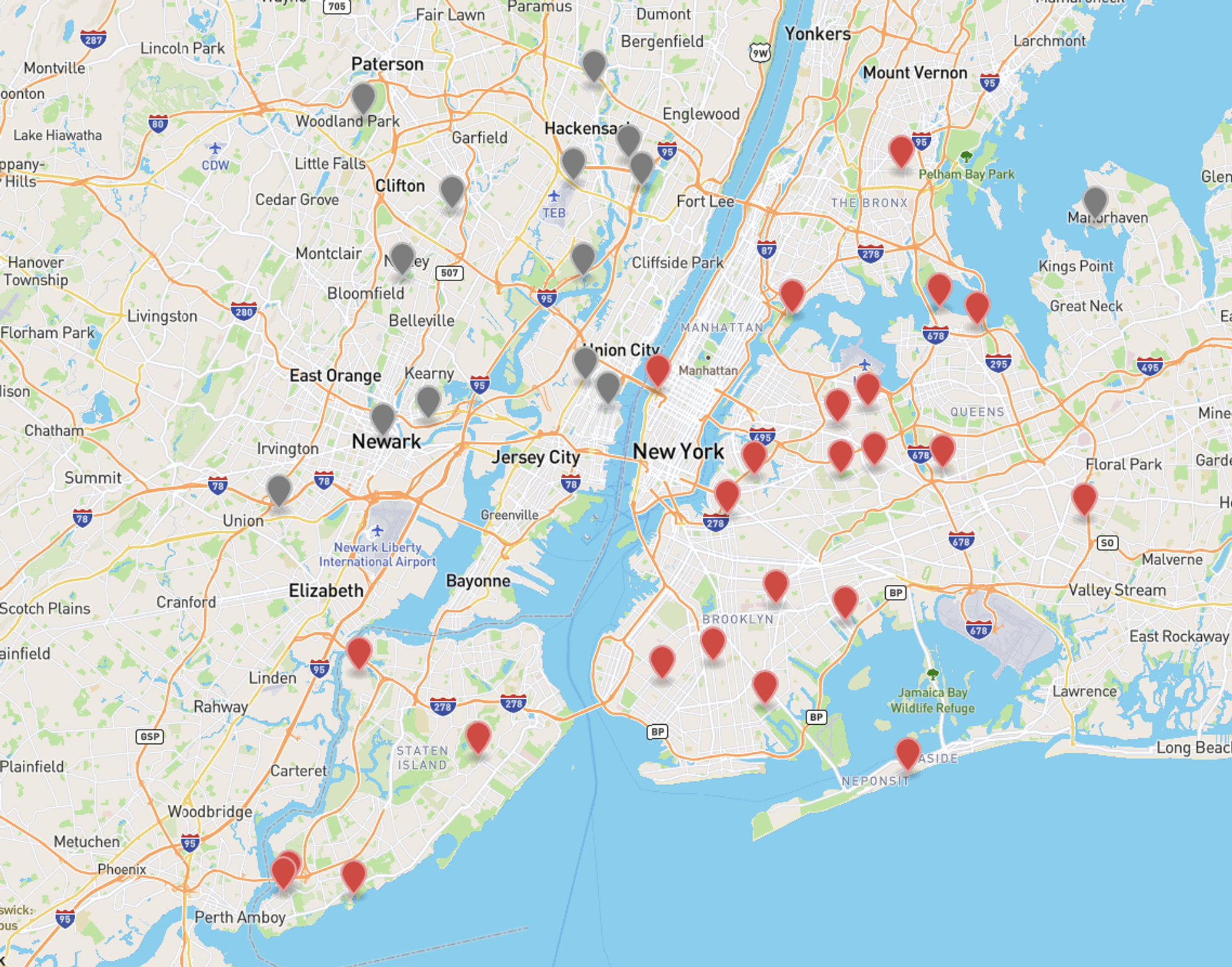⚡ ElasticsearchBook is crafted by Jozef Sorocin (🟢 Book a consulting hour) and powered by:
- Spatialized.io (Elasticsearch & Google Maps consulting)
- in cooperation with Garages-Near-Me.com (Effortless parking across Germany)
Use Case
Given a full-text query of "New York City", I want to cluster the selected locations into buckets that I can render on a map. On top of that, I want to retrieve the bounds of the viewport that my map will "fly to".
The points of interest below are marked red:

Approach
We'll be utilizing:
- a
match queryfor the full text search,
- a
geohash_gridto group locations on the geohash grid - followed by a
geo_centroidsub-aggregation to determine the positions of the weighted centroids → the clusters,
- and a
geo_boundsaggregation to calculate the viewport bounds.
Here's the pseudo-code:
{
"query": MATCH city
"aggs": {
"clusters": {
AGGREGATE on geohash grid,
COMPUTE weighted centroid
}
},
"bounds": {
COMPUTE viewport bounds
}
}
}It's tempting to use a
geo_centroid aggregation without the parent geohash_grid but geo_centroid does not allow for adjusting the zoom-based cluster density. But of course, UI clustering only makes sense when we provide the map's current zoom level (→ "precision"):Now, ES implements the 12 geohash precision levels.
Geo-hashing deserves a chapter of its own but for now, check out this interactive map to gain an intuitive understanding of the
geohash mechanism.Back to the precision levels — these don't directly correspond to the zoom levels you know from Google Maps, Mapbox, or Leaflet, so an adjustment will be needed.
Here's the formula that I use to translate a GoogleMaps zoom into the
precision parameter:// only integer values are allowed -- mapbox & leaflet support floats too so keep that in mind
let precision = int(map_zoom - 8);
if (precision < 1) {
// Default to the highest "zoom-out".
// Consider the whole earth & expect 1 - 3 clusters in total
precision = 1;
} else if (precision > 7) {
// Don't go beyond 7 because we'll get too many 1-member
// clusters which could be actual markers/pins instead
precision = 7;
}
// pass the `precision` into the ES request body